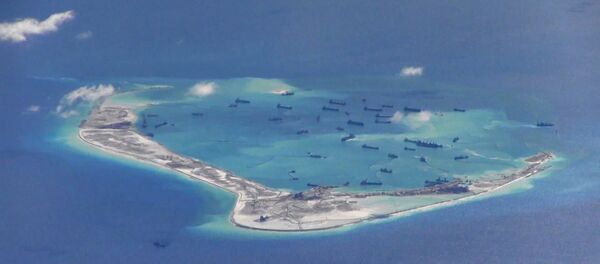During the meeting, Abe praised last year’s revision of Tokyo’s cooperation agreement with Washington and changes in Japanese military doctrine, stressing that those “encouraging” moves facilitated a deterrence against North Korea’s nuclear missile experiments.
The changes in the Japanese military doctrine were made last year, and allow for the country’s Self-Defense Forces to participate in foreign military operations, upon the request of an ally. The step caused a backlash among the Japanese public, with many protesting what they claim is a shift toward militarization.
“I believe, and I know Adm. Kuwano believes, that the Japan-US alliance is the key to peace and stability in (the Asian region),” Harris said to Abe on Tuesday, referring to Katsutoshi Kawano, chief of the SDF’s Joint Staff, with whom he met on the previous day.
The meeting comes in the wake of a non-binding decision by the Hague on the disputed areas in the South China Sea. An international tribunal ruled that China’s claims on the most of the sea’s territories are without merit, in a case brought to the court by the Philippines in 2013.
The gesture was taken by Tokyo as a glimpse of hope, as it has territorial disputes with Beijing as well. Both countries claim the rights on the Senkaku Islands in the East China Sea.
The United States and Japan, during Tuesday’s talks, also discussed the relocation of the US Marine Corps Futenma airbase in Okinawa to the island’s coast. Harris thanked Abe for his support of the facility’s relocation, which was met with protest on the island prefecture.





